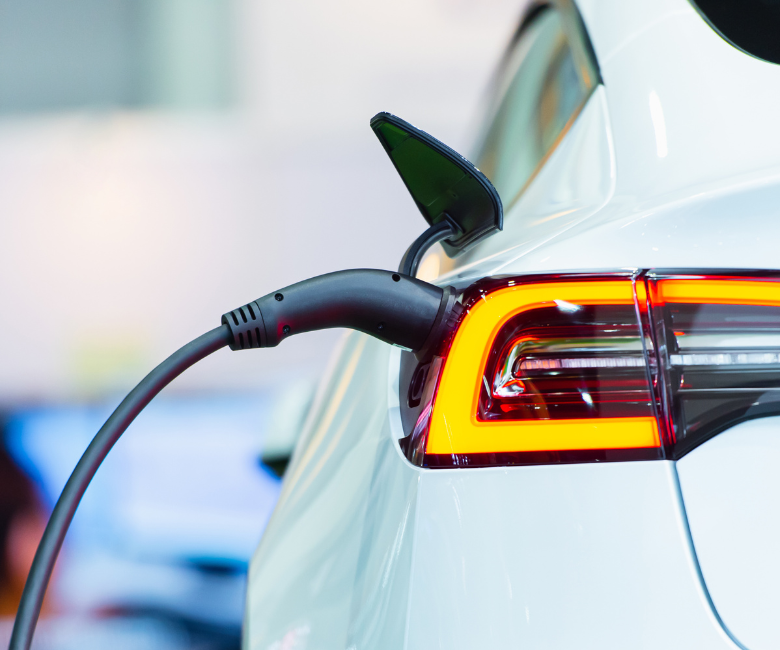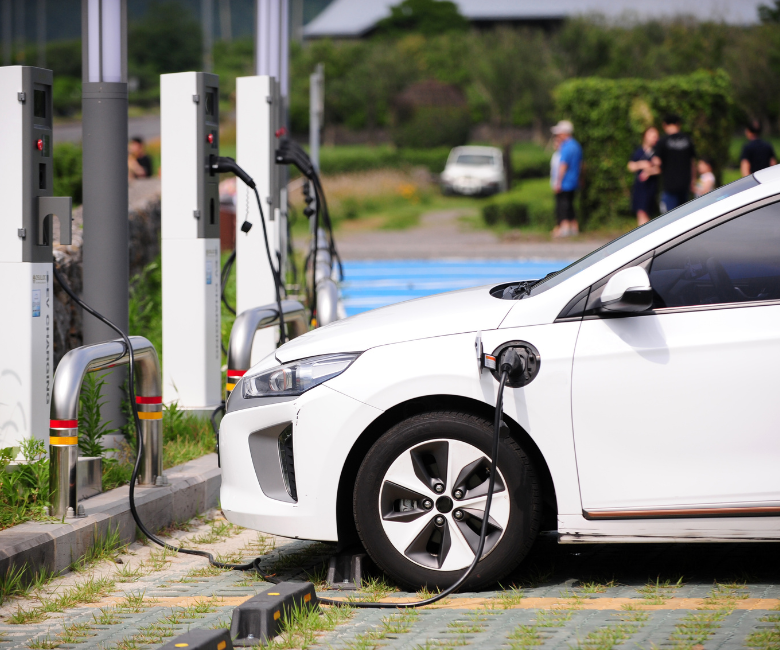
6 Factors to Consider Before Buying an EV in 2024
- Vehicle Maintenance
- PEAK
- April 10, 2024
The concept of electric vehicles is appealing. Before you jump right in, there are several things to know and consider. Owning an EV is hard - here's what you need to know.
Electric vehicles (EVs) are making huge inroads. Major global automakers have moved quickly to enter the EV market, resulting in an explosion of consumer choices.
If you're thinking about buying an electric vehicle, there's a lot to know before you start shopping for makes and models. EV ownership carries many financial and practical considerations, which you should evaluate as a first step.


Financial Considerations
From sticker prices and maintenance to insurance and hidden costs, EVs come with complex financial considerations. Here's a primer on key things to look at during the early stages of your research:
Average Purchase Prices
Electric vehicles are expensive. Kelley Blue Book, a definitive resource for auto market trends, reported the average price of a new EV at $55,353 in January 2024. The most affordable EVs start in the $30,000–$40,000 range, while Edmunds reported the average cost of a used EV at $37,000 at 2024's outset.
Meanwhile, the purchase prices of traditional gas-powered cars are lower on average than electric cars. Though the price gap continues to narrow, experts aren't sure exactly when it will close.
If current EV prices sound a bit rich for your liking, you might catch a break if you wait. Kelley Blue Book tracked a 3.5% year-over-year decline in EV transaction values from 2023 to 2024, and the trend looks set to continue. Major EV producers including Tesla and GM have started lowering their prices as vehicle inventories have piled up on dealer lots.
However, there is one caveat: if you wait too long, you might miss out on valuable electric vehicle tax credits.
EV Tax Credit for 2024
Given the environmental benefits of emissions-free electric vehicles, the federal government offers incentives to consumers who buy one. With a value as high as $7,500, the EV tax credit for 2024 goes a long way toward making electric vehicles more affordable. Used EVs also qualify for a credit of up to $4,000.
While that sounds great on the surface, there's a lot to unpack. First, not all EVs qualify for the credit, and those that do may not be eligible for the maximum credit.
The actual value you can claim with the 2024 EV tax credit will depend on:
- The EV's initial purchase price (MSRP)
- Where it was assembled
- What type of battery it uses
- Where the critical minerals in the battery were sourced
- Your pre-tax income
A lot of variables and technicalities apply, so you'll need to perform your own research to see just how much you'll be eligible to claim. The U.S. Department of Energy (DOE) offers a helpful resource you can use to dig into specific numbers.
Ownership Costs: Upsides & Downsides
Ownership costs of EVs can be tricky to predict. They'll save you money in some ways, but could cost you more in others. First, let's break down savings opportunities:
- You'll save on gas.
How much you'll save depends on whether you buy a hybrid model or go fully electric. In February 2024, Kelley Blue Book reported an average monthly cost of about $60 for the electricity used in home EV charging. Meanwhile, the typical U.S. household spends about $150–$200 per month on gasoline, according to J.D. Power.
- Maintenance costs tend to be lower.
EVs have fewer moving parts, which tends to make general maintenance more affordable. You won't need to change your oil, transmission fluid, or spark plugs.
Next, we'll consider ways EV ownership might cost you more:
- They're more expensive to insure.
In general, EVs cost more to insure than similar gas-powered models. This is mainly because they cost more, and are therefore more expensive to replace in a worst-case scenario.
- Major repairs will cost you.
While you stand to save on regular maintenance, major repairs can cost a pretty penny. EV parts can be harder to source, and their batteries are notoriously expensive. Replacement batteries range from about $5,000–$20,000, so you'd be wise to build a fund to cover that cost should the need arise.
- EVs carry many hidden costs.
The hidden costs of EV ownership can easily total into the thousands of dollars. These costs depend on the make and model you choose, but generally include things like setting up a home charging station and budgeting for the many hardware, software, and firmware updates you'll need. Some manufacturers charge for updates.
Finally, consider long-term EV resale values. There's a lot of conflicting information out there: some authoritative sources say they hold their value better than gas-powered cars, while others describe EV resale values as some of the worst in the auto market.
The takeaway: there's a lot of price turbulence in the EV market right now. Nobody is quite sure where trends are heading, so it's wise to plan for the worst when making projections.


Practical Considerations
Once you've worked out the money side of things, you should also look at whether an EV is practical for your driving habits and location. These three factors will give you plenty of food for thought:
Battery Range
Electric vehicle battery ranges have dramatically improved in recent years, but even the longest-range batteries on the market still won't take you as far as a full tank of gas. As of 2024, EV ranges max out at around 500 miles, and that's for a model with a sticker price north of $110,000. At more moderate price points, expect battery ranges of about 300 miles.
In general, the more you spend on your EV, the better your battery range will be. Even so, EVs are still the most practical for urban and suburban drivers who don't go too far from home. If long-distance road trips are your thing, an electric vehicle probably isn't the best choice (yet, anyway).
Charging Your EV: At Home & On the Road
According to Motor Trend, standard home EV charging stations will set you back around $1,150–$2,750 in purchase and installation costs. With a 240-volt charger, you can go from empty to an 80% charge in about 4–10 hours. If you want a faster home charger, you can get one—but it'll cost you more.
Public EV charging stations can power you up a lot faster than standard home charging systems. You'll have to pay electricity tariffs, though, which will add to your monthly operating costs.
Location is another important factor. While it's improving quickly, public EV charging station coverage is still uneven. If you live somewhere with spotty coverage, you might struggle to manage the logistics of your charging needs. To research station availability in your area, use this DOE resource.
Generally speaking, EVs aren't as practical for drivers in rural locations due to battery range and charging station limitations.
Weather & Climate
Finally, consider the climate where you live. EV batteries function optimally between about 68–86 degrees. In cold weather, they charge more slowly and their range diminishes.
An American Automobile Association (AAA) study found that in 20-degree temperatures, EV batteries lose about 12% of their range. You'll need the heater on if it's that cold, which can also impact your range to the tune of up to a 40% loss.
If you live in a colder climate, there's a compelling argument to be made for traditional gas-powered vehicles being more practical, at least for now.
Keep Your New EV Running Strong
If you decide to invest in an EV, it’s important to choose specially engineered products to keep it running at its best. PEAK offers high-performance antifreeze and coolant uniquely formulated for the specific technical needs of electric vehicles. It's part of the complete lineup of premium car care products you'll find at PEAKAuto.com.

